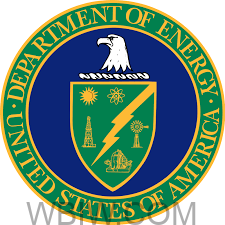
WEST TERRE HAUTE– In a groundbreaking move to bolster American agriculture and improve air quality, the Department of Energy’s Loan Programs Office has announced a conditional commitment of a $1.559 billion loan—toward a total investment of $2.4 billion—to Wabash Valley Resources (WVR), a pioneer in low-carbon anhydrous ammonia fertilizer production. This historic investment is one of the single largest efforts to increase the supply of domestically produced fertilizer and displace imported ammonia supply to the Eastern Corn Belt.
WVR’s innovative approach of utilizing industrial waste in combination with carbon capture could be the United States’ first carbon-negative ammonia production process.
Enhancing Food Security and Opening New Markets for American Farmers
By producing ammonia domestically, WVR is set to play a crucial role in alleviating a restricted supply chain in the Eastern Corn Belt. Furthermore, WVR’s efforts will support the production of low-carbon corn and ethanol, expanding American farmers’ access to domestic and international markets that value green attributes.
Revitalizing a Coal Community
The $2.4 billion investment is a victory for the agricultural sector and a catalyst for revitalizing a community that has been deeply affected by the decline of coal-related industries. This initiative is expected to create over 1,100 direct and indirect jobs. Additionally, it will create at least 500 union construction jobs. WVR is proud to build on its long-standing tradition of employing a unionized workforce for construction and maintenance by signing the National Maintenance Agreement.
Transformational Partnerships Driving Innovation
The development of WVR’s project has garnered support from esteemed organizations. Climate Investment, a specialized decarbonization investor founded by eleven world-leading energy companies, was an early investor in WVR’s carbon capture initiatives. Baker Hughes, an energy technology leader, has been a long-term partner, aiding WVR’s geological sequestration efforts, and will supply advanced technology and equipment. Honeywell, a global leader in the energy transition, played a crucial role in designing WVR’s carbon capture process, utilizing its cryogenic gas separation technology. Samsung E&A America, a global engineering firm with a strong commitment to energy transition in the U.S., is supporting the overall facility design.
According to Dan Williams, WVR’s chief operating officer, “This close to a-decade-long development phase has been made possible through the dedicated efforts of the Department of Energy, the building trades unions, and our strategic partners. WVR is thrilled to be at the forefront of a new industrial era that harmonizes environmental, social, and economic benefits, and we cannot thank our partners enough.”
What They Are Saying
“This project is a win for working families, bringing quality construction jobs to a community that has long relied on coal. By transforming industrial waste into a valuable resource, we are not just cleaning up our environment; we are also putting skilled tradespeople to work, ensuring that the benefits of this project are felt where they are needed most. This is exactly the kind of forward-thinking development that supports both workers and our communities,” said Kenneth Cooper, international president of the International Brotherhood of Electrical Workers (IBEW).
“Creating a large new source of anhydrous ammonia in Indiana would be of enormous benefit to Hoosier farmers. And, manufacturing fertilizer with a low carbon rating is even more powerful,” said Don Villwock, former president of Indiana Farm Bureau and a farmer in Edwardsport, Indiana.
“This significant investment by the Department of Energy is a historic step toward increasing the supply of domestically produced, low-carbon fertilizers. It supports the revitalization of a coal community that has suffered job losses from the decline of coal mining and power generation while also addressing the carbon intensity of our farming and food industries,” said former State Senator Jon Ford (R-Terre Haute).



